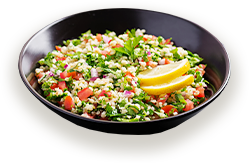The Largest Selection of Wholesale Mediterranean and Middle Eastern Products in Denver
When it comes to trying new, exciting cuisine, few foods hit the spot like a deliciously fresh Mediterranean meal. However, we know that it can be very difficult to find authentic Mediterranean grocery wholesalers in Denver, CO. Having lived in metro Atlanta for years, we realized that our customers needed an easy way to find quality wholesale Middle Eastern and Mediterranean food in bulk. That is why we created Nazareth Grocery Mediterranean Market - to give everyone a chance to enjoy tasty, healthy food, desserts, and authentic Mediterranean gifts at wholesale prices.
Founded in 2009, Nazareth Grocery has become one of Denver's leading international wholesale grocery stores. We are very proud to serve our customers and do everything in our power to give them the largest selection of high-quality wholesale goods available.
If you're looking for the freshest, most delicious Middle Eastern wholesale products and ingredients, you will find them here at the best prices in the state. We encourage you to swing by our store in Marietta to see our selection for yourself. We think that you will be impressed!
The Nazareth Difference
At Nazareth Grocery Mediterranean Market, our mission is simple: bring you and your family the largest selection of wholesale Mediterranean products in Denver. When coupled with our helpful, friendly staff and authentic Middle Eastern atmosphere, it's easy to see why we are the top Middle Eastern grocery wholesaler in Denver, CO. We're proud to carry just about every kind of Mediterranean and Middle Eastern product that you can think of, from prepared meals and hookahs to fine seasonings and sweets. We're here for our customers and want each one of them to have a unique, one-of-a-kind experience when they shop with us.
Our loyal customers love our selection of the following wholesale foods and gifts:
 Fresh Breads
Fresh Breads Olives
Olives Hummus
Hummus Cheeses
Cheeses Sauces
Sauces Savory Foods
Savory Foods
 Desserts
Desserts Drinks
Drinks Hookahs
Hookahs Tobacco
Tobacco Gifts
Gifts Much More!
Much More!
- The Largest Selection of Wholesale Mediterranean
- The Nazareth Difference
- Most Popular Wholesale Mediterranean Foods
- Most Popular Wholesale Middle Eastern Foods
- Benefits of Eating a Mediterranean Diet
- Benefits of Eating a Mediterranean Diet Tips
- Why Buy Mediterranean and Middle Eastern Products Wholesale?
Our Service Areas
Most Popular Wholesale Mediterranean Foods
There is so much more to Mediterranean food than pizza and pasta. The perfect climate combined with delicious foods and amazing wine makes the Mediterranean incredibly irresistible. That's why our customers absolutely love to buy this kind of cuisine in bulk. Every country in this region has its own set of specialties and delicacies, each with its own flavors and styles of preparation.
Mediterranean countries include:
- France
- Greece
- Italy
- Turkey
- Syria
- Egypt
- Israel
- Libya
- Morocco
- Tunisia
- Spain

So, when it comes to the most popular wholesale Mediterranean products in Denver,
what are we talking about?

Feta Cheese
Feta cheese is a classic Mediterranean dairy product that is often enjoyed on its own, in Greek salads, on bread, or mixed with zucchini. Depending on where the feta is sourced and produced, the cheese can be made from cow, sheep, or goat milk, or even a combination of the three. Regardless of the animal it comes from, this delicious cheese is a crowd favorite.

Baba Ganoush
This Levantine dish is one of the most well-known Mediterranean dishes to eat in the United States. It typically comes in the form of a dip, served with pita or another kind of dipping bread. Commonly served before dinner as an appetizer of sorts, it usually features tahini, eggplant, garlic, spices, and sometimes yogurt. This tasty cuisine works great as a spread on a sandwich, or you can even eat it with a spoon, all on its own.

Baklava
If you have never tried authentic baklava before, get ready to have your mind blown. This dessert is a traditional Mediterranean food that will have your taste buds craving more and more. Once you open a box of baklava from our Mediterranean grocery wholesaler in Denver, CO, you won't want to stop eating! Baklava is made with layers of thin filo dough, which is layered together, filled with chopped nuts (think pistachios), and sealed with honey or syrup. Baklava is so good that its origins are debated, leaving many wondering which country invented the dessert. Everyone from the Turks to the Greeks and even Middle Easterners hold unique takes on baklava. Try each one to discover your favorite!
Most Popular Wholesale Middle Eastern Foods
Fresh, healthy, aromatic, rich: it's no wonder that the popularity of Middle Eastern cuisine and products has skyrocketed in the United States. This genre of cuisine features a large variety of foods, from Halvah to Labneh. If there were one common theme throughout all Middle Eastern food, it would be the bright, vibrant herbs and spices that are used. These flavorings help create rich, complex flavors that foodies fawn over. Typically, Middle Eastern food is piled high for all to eat, with enough food for an entire republic to put down.

Tabbouleh
This refreshing, healthy dish is chock-full of greens, herbs, tomatoes, and bulgur (or cracked wheat), creating a memorable, bold flavor. This dish may be eaten on its own or paired with a shawarma sandwich or helping of falafel. It's best to buy your ingredients in bulk to make this dish because it tastes best freshly made with family around to enjoy. Just be sure to bring a toothpick to the tabbouleh party - you're almost certain to have some leafy greens stuck in your teeth after eating.

Shawarma
We mentioned shawarma above, and for good reason - this dish is enjoyed by men and women around the world, and of course, right here in the U.S. Except for falafel, this might be the most popular Middle Eastern food item in history. Shawarma is kind of like a Greek gyro, with slow-roasted meat stuffed in laffa with veggies and sauce. The blend of spices and the smoky meat mix together to create a tangy, meaty flavor that you will want to keep eating for hours. For western-style shawarma, try using beef or chicken. For a more traditional meal, try using lamb from our Middle Eastern grocery distributor in Denver, CO.

Hummus
Traditionally used as a dip meant for fresh pita, hummus is a combo of chickpeas, garlic, and tahini, blended together until silky, smooth, and creamy. You can find hummus in just about any appetizer section of a Middle Eastern restaurant menu. That's because it's considered a staple of Middle Eastern food that can be enjoyed by itself, as a spread, or with fresh-baked pita bread. Hummus is also very healthy, making it a no-brainer purchase from our grocery store.
Benefits of Eating a Mediterranean Diet
If there's one diet that is most well-known for its health benefits, it has got to be the Mediterranean diet. In 2019, U.S. News & World Report listed the Mediterranean diet as No. 1 on its best over diet list. This incredible diet has been cited to help with weight loss, brain health, heart health, diabetes prevention, and cancer prevention.
Whether you already love Mediterranean food or you're looking to make some positive changes in your life, this "diet" is for you. Eating cuisine like Greek food, Persian food, Turkish food, and Italian food is healthy and tastes great. Even better than that? At Nazareth Wholesale Grocery, we have many staples of the Mediterranean diet for sale in bulk so that you can stock up on your favorites at the best prices around.
So, what exactly is the Mediterranean diet?
It is a way of eating that incorporates traditional Greek, Italian, and other Mediterranean cultures' foods. These foods are often plant-based and make up the foundation of the diet, along with olive oil. Fish, seafood, dairy, and poultry are also included in moderation. Red meat and sweets are only eaten in moderation, not in abundance. Mediterranean food includes many forms of nuts, fruits, vegetables, fish, seeds, and more. Of course, you can find at them all at our wholesale Mediterranean grocery store!
Here are just a few of the many benefits of eating a healthy Mediterranean diet:

Reduced Risk
of Heart Disease
Many studies have been conducted on this diet, many of which report that Mediterranean food is excellent for your heart. Some of the most promising evidence comes from a randomized clinical trial published in 2013. For about five years, researchers followed 7,000 men and women around the country of Spain. These people had type 2 diabetes or were at a high risk for cardiovascular disease. Participants in the study who ate an unrestricted Mediterranean diet with nuts and extra-virgin olive oil were shown to have a 30% lower risk of heart events.

Reduced Risk
of Stroke for Women
In addition to the heart-healthy benefits of a Mediterranean diet, studies have shown that eating healthy Mediterranean and Middle Eastern foods can reduce the chances of stroke in women. The study was conducted in the U.K., which included women between the ages of 40 and 77. Women who stuck to the Mediterranean diet showed a lower risk of having a stroke - especially women who were at high risk of having one.
Benefits of Eating a Mediterranean Diet
First and foremost, purchase your Mediterranean and Middle Eastern wholesale foods from Nazareth Grocery - we're always updating our inventory! Getting started on this healthy, delicious diet is easy.
Try these tips:

1.
Instead of unhealthy sweets like candy and ice cream, try eating fresh fruit instead. It's refreshing, tasty, and often packed with great vitamins and nutrients.
2.
Try eating fish twice a week, in lieu of red meat. Fish is much healthier and doesn't have the unfortunate side effects of red meat, like inflammation.
3.
Try planning out your meals using beans, whole grains, and veggies. Don't start with meats and sweets.
4.
They're tasty, but try to avoid processed foods completely.
5.
Instead of using butter to flavor your food, use extra virgin olive oil instead. Olive oil contains healthy fats and tastes great too.
6.
Try to get more exercise and get out of the house. The Mediterranean lifestyle is an active one, best enjoyed in the beautiful sunshine when possible.
Why Buy Mediterranean and Middle Eastern Products Wholesale?
Buying wholesale and retail are quite different. When you buy products from a wholesaler, you're essentially buying from the middleman between a retail establishment and the manufacturer. Wholesale purchases are almost always made in bulk. Because of that, buyers pay a discounted price. That's great for normal buyers and great for business owners, who can sell those products to profit. This higher price is called the retail price, and it is what traditional customers pay when they enter a retail store.
Free Estimate
Latest News in Denver, CO
What is Denver, CO Known For? 9 Things to Love About This City
Ana de Guzmanhttps://www.redfin.com/blog/what-is-denver-co-known-for/
Nestled in the heart of the Rocky Mountains, Denver, Colorado, offers a unique blend of outdoor adventure and urban sophistication. With over 300 days of sunshine each year, residents enjoy a vibrant outdoor lifestyle, from hiking and skiing in the nearby mountains to exploring the city’s numerous parks and bike trails. Whether you’re drawn to the city for its outdoor recreation, cultural attractions, or thriving job market, Denver has something to offer everyone. So if you’re looking for ...
Nestled in the heart of the Rocky Mountains, Denver, Colorado, offers a unique blend of outdoor adventure and urban sophistication. With over 300 days of sunshine each year, residents enjoy a vibrant outdoor lifestyle, from hiking and skiing in the nearby mountains to exploring the city’s numerous parks and bike trails. Whether you’re drawn to the city for its outdoor recreation, cultural attractions, or thriving job market, Denver has something to offer everyone. So if you’re looking for homes for sale in Denver, an apartment to rent, or want to learn more about the area, this Redfin article will guide you on what Denver is known for.
1. Outdoor recreation
Denver is a haven for outdoor enthusiasts, offering immediate access to the majestic Rocky Mountains for hiking, skiing, and snowboarding. Its extensive network of parks, such as City Park and Washington Park, coupled with nearby scenic trails and biking paths, solidifies Denver’s reputation as an outdoor paradise.
With Hiking the Rockies, Robin shares how hiking opportunities outside of Denver are a great way to “feel healthier and happier while disconnecting from screens and connecting with nature.”
Cynthia Kenner with Up the Creek Ski & Recreation Club, a non-profit club that’s been in the Denver area for nearly 50 years, shares how their club takes full advantage of these recreational opportunities. They plan membership ski trips, rafting and canoeing excursions, and other numerous social events throughout Colorado and the Denver area.
Your future home is just a tap away
Explore homes with the Redfin app anytime, anywhere. Download app 2. Craft beer scene
Often referred to as the “Napa Valley of Beer,” Denver boasts a great craft beer scene. The city is home to numerous breweries offering various unique and flavorful beers. Denver hosts the Great American Beer Festival, attracting beer lovers worldwide.
3. Arts and culture
The renowned Denver Art Museum highlights Denver’s art and culture scene, featuring an extensive collection spanning various cultures and periods. The city’s RiNo (River North) Arts District, with its eclectic street art, galleries, and creative spaces, showcases Denver’s dynamic and evolving artistic landscape. From the iconic Red Rocks Amphitheatre to the diverse culinary experiences, Denver has much to offer its residents.
David Gass, founder of Dgass Photography in Denver, shares that his favorite way to experience arts and culture is “through Denver’s First Friday in the Santa Fe Arts District.” He shares how the event sees locals flood Santa Fe Street “to visit local art galleries, bars, and restaurants.”
Additionally, Kate Merrill, Denver local and owner of Kate Merrill Photography, shares how the RiNo District has “several unique, jaw-dropping murals unlike anything I have seen traveling to other cities.”
4. Skiing and snowboarding
Skiing and snowboarding is Denver’s way of life. The city is a premier destination for skiing and snowboarding, serving as a gateway to world-class resorts including Breckenridge, Vail, and Aspen. The proximity to these renowned ski areas and the stunning slopes of the Rocky Mountains positions Denver as a hub for winter sports enthusiasts. With a short drive from the city, visitors and locals can access unparalleled snowy terrain, making Denver a mecca for skiing and snowboarding enthusiasts.
5. Startup and tech hub
Denver has a thriving startup and tech hub, attracting entrepreneurs and tech professionals nationwide. The city’s supportive business environment, access to capital, and skilled workforce have contributed to its reputation as an expanding tech hub.
6. Red Rocks Amphitheatre
The Red Rocks Amphitheatre stems from its stunning natural setting, nestled amidst towering red rock formations, offering a unique and picturesque concert experience. Renowned for its acoustics and breathtaking city skyline views, this iconic outdoor venue has hosted legendary performances, making it a must-visit for music enthusiasts worldwide. The Red Rocks Amphitheatre’s allure lies in its concerts and natural beauty, attracting visitors for fitness activities, film screenings, and unforgettable sunrise yoga sessions.
Christina Cookson, Denver pet photographer and owner of Wag Your Tail Photography, recommends that while you’re at the venue, “check out the Trading Post for Colorado music history and the gorgeous Red Rock trails lined with epic views.”
7. Active lifestyles
Denver is known for its active lifestyle and fitness culture. The city’s residents are passionate about health and wellness, and Denver offers many fitness studios, outdoor workout spaces, and recreational activities. The city’s emphasis on fitness contributes to its reputation as one of the healthiest cities in the United States.
Mike and Erin Ross with Denver’s premier sport and social club, Meet. Play. Chill. shares that there are numerous outdoor activities such as jogging and bicycling, but due to the desert climate, he recommends “water bottles and lip balm as daily essentials.”
8. Dog-friendly culture
The city is also renowned for its inclusivity of canine companions. Ryan Erickson with Fetch Photo Truck in Denver, shares how “many businesses such as breweries, coffee shops, and restaurants love having man’s best friend join them.” Additionally, Erickson adds how “many Denver communities such as Central Park and Lowry were crafted with green belts perfect for dog walks and potty breaks.”
9. Close proximity for scenic trips
Denver boasts a strategic location that provides easy access to breathtaking scenic trips. Nestled near the Rocky Mountains, residents and visitors can take short excursions to explore stunning landscapes.
Jess Newton, is the CEO and Founder of Vibe Tribe Adventures, a Denver, Colorado-based non-profit organization offering global outdoor recreation and adventure sports opportunities for Black, Indigenous, People of Color (BIPOC), and friends. Jess recommends checking out Trout Haven Fishing Pond at Estes Parks, which boasts giant colorful slides at Fun City. She also shares that Guanella Pass at the end of summer offers a beautiful and scenic cruise.
Heavy snow set to bury Denver and Colorado's Front Range Thursday
Dave Aguilerahttps://www.cbsnews.com/colorado/news/colorado-weather-heavy-front-range-snow-set-to-bury-thursday/
Our March snowstorm is set to blast the Front Range with possibly the heaviest Denver metro snowstorm we have seen in the last 3 years. Three systems are coming together for our big change for Thursday.The first small system produced mountain snow with showers and thunderstorms across the plains.The second system will roll through Wednesday night int...
Our March snowstorm is set to blast the Front Range with possibly the heaviest Denver metro snowstorm we have seen in the last 3 years. Three systems are coming together for our big change for Thursday.
The first small system produced mountain snow with showers and thunderstorms across the plains.
The second system will roll through Wednesday night into Thursday with super strong upslope winds blowing in from the northeast. At the same time a deep, low pressure trough will dig into the southwestern U.S. pushing up moisture from the Gulf of California and the Pacific smack into southern Colorado.
Thursday is a First Alert Weather Day for heavy snow across the Denver Metro region. The Denver metro area could see 10 to 20 inches of snow. With 1 to 4 feet of snow possible in and near the Front Range foothills and Palmer Divide. A Winter Storm Warning is in place through early Friday morning.
Driving will be very difficult in the Denver metro area on Thursday and nearly impossible in and near foothill areas through Friday morning. Travel is discouraged if you can avoid it on Thursday.
Southern areas of the state also have several warning and advisories for heavy snow. Colorado Springs and Pueblo could see 4 to 15" and 3 to 10 inches respectively. Some of the southern mountains may see 1 to 2 feet of snow.
Watch First Alert Chief Meteorologist Dave Aguilera's weather forecasts on CBS News Colorado -- on TV and on our free streaming service. Check out his bio and send him an email.
What is Denver, Colorado known for?
Patrick McGuirehttps://www.uncovercolorado.com/what-is-in-denver-co-to-do/
Asking what’s in Denver, Colorado is a little like asking how to cook an egg. Sure, it’s not as big or influential of a city as New York City, LA, or even Chicago, but Denver’s become one of the most desirable places in the country to live in and visit in recent years.One of the characters on Netflix’s hugely popular show Money Heist AKA La Casa de Papel is named “Denver” if that gives you an idea of the city’s growing popularity and visibility within popular culture. If you&...
Asking what’s in Denver, Colorado is a little like asking how to cook an egg. Sure, it’s not as big or influential of a city as New York City, LA, or even Chicago, but Denver’s become one of the most desirable places in the country to live in and visit in recent years.
One of the characters on Netflix’s hugely popular show Money Heist AKA La Casa de Papel is named “Denver” if that gives you an idea of the city’s growing popularity and visibility within popular culture. If you’ve never been to the Mile High City, there’s a lot here to see, do, drink, hear, and learn about.
From fascinating cultural and historical offerings to a bountiful offering of recreational and medicinal marijuana dispensaries to hip neighborhoods with skyrocketing rents and home prices, a lot is happening in Denver.
Lots, and lots of pot dispensaries
After hundreds of dispensaries began popping up after Colorado first legalized recreational marijuana in 2012, Denver residents pondered whether the number of dispensaries would soon eclipse the number of Starbucks. By 2016, Denver was home to twice as many dispensaries as Starbucks, according to Business Insider.
It’s tricky to pin a concrete number on pot dispensaries that are currently operating because new ones are always setting up shop, but some tally the number close to 600 as of winter of 2021. Pot has become an integral part of Denver’s cultural identity, and if you’re skeptical of this fact, just head to town and smell for yourself.
A robust park system and famous outdoor spaces
Factoring in the mountains just west of town, the Denver area boasts almost 20,000 acres of parks, including the world-famous Red Rocks Amphitheater and beloved urban staples like Washington Park, City Park, and Sloan’s Lake Park. If you prefer your park experiences to have a haunted element, consider spending some time at Denver’s Cheesman Park. Before it became one of Denver’s prettiest public spaces, Cheesman Park was a failing cemetery.
Denver leaders decided to convert the space into a massive public park and hired an unsavory character named E.P McGovern to relocate the estimated 5,000 graves on site. McGovern dismembered bodies and stuffed them into child-sized coffins to reduce his workload. Anywhere from 400 to 4,000 bodies or parts of bodies, are thought to still be under the park to this day.
Though it’s not technically in Denver, Red Rocks is a crucial part of Denver’s identity. The unique, larger-than-life outdoor venue has hosted virtually every large and influential modern musical artist you can think of, from The Beatles’ first American concert down to sold-out shows featuring Ray LaMontagne, The Avett Brothers, and, Denver’s favorite, jam bands.
Despite what you may have heard, the unique shape of this venue doesn’t provide natural acoustics that improve the sound, and in fact, the outdoor setting poses some significant challenges for audio engineers. But even so, a night at Red Rocks featuring an artist you love simply can’t be beaten.
Here’s a look at our favorite parks in Denver.
World-famous breweries and a trend-setting beer culture
In addition to being home to some of the most celebrated breweries in the world, Denver hosts the Great American Beer Festival every late September or early October, which happens to be the biggest beer festival in the United States. It’s also one of the most influential beer-focused gatherings on the planet.
You’d be hard-pressed not to find breweries in any decent-sized American city these days, but that wasn’t the case three decades ago back when Denver’s craft beer brewers were hard at work innovating in basements and garages before the micro-brewing trend caught on nationally and then internationally. Some of Denver’s most influential and celebrated breweries include Crooked Stave, Great Divide, TRVE, and Renegade.
Lots of sunshine every year but maybe less sunny days than you think
Every day, people move to Denver thinking they’re in for an average of 300 days of sunshine a year, and every day they are wrong. Yes, Colorado gets lots and lots of sunshine compared to the rest of the country, but the 300 number comes from a railroad publicist in the 1870s who was working to attract tourism from the East Coast. The publicist not only knew nothing, or very little we can assume, about climatology but spread the falsehood before climate records in the area were recorded.
While the publicist’s claim might have been completely untrue, you’ve got to give the guy credit because after 150 years people still think it’s true and there’s no sign of the lie losing its staying power anytime soon.
Exploding housing costs and hip neighborhoods
Denver’s become one of the most popular places to move to in the United States, and unfortunately, ballooning demand for housing in the city has come with steep costs not only for newcomers but for the people who were already living here. Take a look at the years 2020 to 2021 for example. That year, rents jumped 16.5% while house prices skyrocketed 21.5%.
If you’re going to live here, it’s going to cost you. However, if you come from a place like New York City, Seattle, San Fransisco, or LA, Denver is still considerably less expensive.
With music venues, bars, art galleries, and unique shops, neighborhoods like Baker, the Highlands, and RINO have become some of the most coveted locations in the city to live in or visit. Plus there are a plethora of previously overlooked spots such as West Colfax, Globeville, and Berkeley getting lots of attention. Even areas in Aurora and Lakewood have become too expensive to rent or buy a home for many Coloradans.
A place looking to the present and future to find its identity, not the past
There are a couple of fascinating locations that shine a light on its past, like the Brown Palace Hotel and Spa, Molly Brown House Museum, Union Station, and Larimer Square. But compared to other major American cities, Denver is a place that has largely hedged its bets on the future, not the past.
If you need convincing, consider Auraria. What’s now a sprawling and visually uninspiring higher educational campus consisting of two colleges and a university was once Denver’s oldest and most historic neighborhood. In the late 60s, the city began demolishing homes and businesses in the area to make way for concrete and glass buildings that would later house the Community College of Denver, Metropolitan State University of Denver, and the University of Colorado Denver.
250 businesses and 33 business homes were displaced, and many residents from the largely Hispanic and working-class neighborhood relocated to the nearby Lincoln Park Homes housing project nearby. Thousands of residents and business owners lost their communities, and the cultural toll on the city is incalculable.
While events like the National Western Stock Show highlight the city’s Western heritage, Denver heavily prioritizes modernity over its historical legacy and origin story.
Light and commuter rail service
America’s western cities are largely car-centric and many lack public subway and rail transportation. Denver is not one of them. The city’s light and commuter rail lines connect over 50 stations throughout the metro area.
One of the most important routes is from Union Station (located in Downtown Denver) to Denver International Airport, which sits 23 miles east of town. With the city’s population exploding in recent years with no end in sight, public transportation has been critical in alleviating traffic conditions by taking cars off the road. Yes, any Denver local will tell you how bad traffic has gotten recently, but how much worse would it be without light rail?
From the Denver Mint to the University of Denver to loads of historic buildings, holiday traditions, and prominent figures, there’s much more that could be added to this list of what’s in Denver. What’s featured here is just a bird’s eye view of what’s happening in this growing Mountain West city.
Energy | Former Tesla executive considering Commerce City for new sodium-ion battery foundary
Aldo Svaldihttps://www.denverpost.com/2024/04/18/peak-energy-commerce-city-for-new-sodium-ion-battery-plant/
Adams County may soon land its third large-scale battery manufacturing plant, one producing more affordable and environmentally safer batteries.The Colorado Economic Development Commission approved $1,053,000 in state Strategic Fund incentives on Thursday morning to Project Eleven, the code name for a startup developing sodium-ion battery technologies.“The main drivers for the location decision are incentives, a business-friendly tax environment, access to talent and renewable energy policies,” Michelle Hadwiger, di...
Adams County may soon land its third large-scale battery manufacturing plant, one producing more affordable and environmentally safer batteries.
The Colorado Economic Development Commission approved $1,053,000 in state Strategic Fund incentives on Thursday morning to Project Eleven, the code name for a startup developing sodium-ion battery technologies.
“The main drivers for the location decision are incentives, a business-friendly tax environment, access to talent and renewable energy policies,” Michelle Hadwiger, director of global business development at the Colorado Office of Economic Development and International Trade told commissioners.
State support, which will come in the form of cash rather than the usual tax credit, is tied to the creation of 162 jobs over five years at a research and development campus and a battery foundry in Commerce City. Project Eleven is also considering locations in Michigan, Kentucky and California.
The jobs, which include engineering, manufacturing and management positions, are expected to pay an average annual wage of $120,000, which is 172% of the average annual wage in Adams County.
Local governments must match Strategic Fund awards and Commerce City is doing that. The combined incentives work out to $13,000 per job. The state incentive is linked to the company raising $26 million from investors, Hadwiger said. Late last year it raised about $10 million.
Although the request was presented under a code name, Landon Mossburg, a co-founder and CEO of Peak Energy, spoke on behalf of Project Eleven without hiding his identity.
“This will be very capital intensive, with lots of ramp up,” said Mossburg, who expects battery cell manufacturing could start in 2026. Given that the company will likely report losses for the foreseeable future, it sought cash incentives rather than the tax credits, he told commissioners.
Mossburg helped Tesla scale up its battery manufacturing capacity as the company’s former engineering director. He also helped Northvolt, a Swedish battery maker, establish a manufacturing base in North America.
Sodium is about 500 times more abundant than lithium, and widely available in the U.S., reducing the country’s dependence on foreign sources. Mining sodium is easier on the environment than lithium extraction and sodium-ion batteries are much cheaper to mass produce.
Beyond that, sodium-ion batteries are less prone to overheating and catching fire, making them safer. And when they wear out, they are easier to recycle.
The big knock against them, however, is that they are less dense, meaning they can’t store as much energy. Peak Energy said it has found a way to improve storage capacity and will continue to research advances at its new campus.
Utilities and renewable energy producers are expected to be the company’s biggest customers. Renewable sources typically produce energy intermittently when the wind is blowing or the sun is shining. Storage is key to holding that energy so it can be provided to customers when needed.
If Peak Energy chooses Commerce City, it will represent a growing streak of battery providers, each with a different technology, setting up in Adams County. Federal incentives designed to bring more green energy and semiconductor manufacturing back to the U.S. have spurred a surge in investments.
Solid Power, based in Louisville, started producing materials for solid-state batteries at a new factory in Thornton last year. That company is a spin-off using technology developed at the University of Colorado Boulder.
Amprius Technologies, based in Freemont, Calif., is converting an abandoned Kmart distribution hub on East Bromley Lane in Brighton into a 775,000-square-foot facility employing 330 workers making lithium-ion batteries. Amprius uses a newer silicon anode technology to boost battery density and speed up recharging times, a plus for electric vehicle makers.
The plant has faced community opposition, mostly from surrounding homeowners worried about lithium and fire dangers, but it is moving forward.
Commerce City now appears close to landing a sodium-ion battery plant adding a third type of technology and helping the state develop a new industry.
The nation has seen 77 battery projects representing $80 billion in investment and 49,000 new jobs announced since the signing of the Inflation Reduction Act in August of 2022, according to a Cushman & Wakefield study.
Get more business news by signing up for our Economy Now newsletter.
The truth about winter in Denver
MSU Denver REDhttps://red.msudenver.edu/2023/the-truth-about-winter-in-denver-2/
Climate and Environment The Mile High City is far from a bleak, freezing snowscape during the cooler months — and the season’s weather patterns may surprise you.Editor’s note: This story originally appeared in RED in October 2018 and has been edited to ensure that all information is up to date. New to Denver and bracing for your first winter at 5,280 feet above sea level? Richard Wagne...
The Mile High City is far from a bleak, freezing snowscape during the cooler months — and the season’s weather patterns may surprise you.
Editor’s note: This story originally appeared in RED in October 2018 and has been edited to ensure that all information is up to date.
New to Denver and bracing for your first winter at 5,280 feet above sea level? Richard Wagner, Ph.D., and Sam Ng, Ph.D., professors of Meteorology at Metropolitan State University of Denver, offer a primer on what to expect.
Denver winters are quite mild
If you’re planning to pack a polar face mask and Mount Everest-ready mittens for a winter trip to Denver, you might want to rethink your wardrobe. While it can get decidedly chilly sometimes, overall temperatures during the winter months are moderate. “Even the coldest month, December, has an average daily high temperature of 45 degrees, and days reaching 60 degrees are fairly common,” Wagner said.
For a realistic snapshot of what Colorado winter weather looks like, just watch a Denver Broncos home game on TV and check out the crowd. Even in January, you’ll often see the fans wearing short sleeves or a light jacket. And that’s because a nice winter’s day in Denver feels like a cool spring day in many other places.
RELATED: Snowmaking stretches ski season. But is it sustainable?
Our winters start early and end late
Denver residents generally first see snowfall in mid-October — earlier than any other major city in the U.S. — and are usually still clearing the fluff from their driveways in late April.
And despite the gradually warming climate, the snow still occasionally hits Mile High sidewalks as early as September and did so just three years ago, in fact. But early snow really peaked in the late ’90s.
“Denver’s official records show that for five years during the ’90s, we had measurable snowfall in September,” Wagner said. And many locals still remember September 1985 with a shiver: That’s when a massive 8.7 inches of snow fell amid deeply unseasonal temperatures as low as 17 degrees.
When it snows, it really snows
Denver averages 57 inches of snow a year, which sounds relatively modest, especially when compared with the 300-plus inches that fall on the nearby Rocky Mountains. But when a snowstorm does hit town, it can drop the kind of huge, thick blankets of snow that could easily bury a small dog. And if anything, those storms are growing bigger.
“Over the past 20 years, we’ve seen more of these huge dumps of snowfall hitting Denver, sometimes more than a foot and a half in a single storm,” said Wagner. “The biggest snows generally arrive early in the season during October or much later in March or April. But even the smaller January storms are now getting deeper.”
RELATED: What’s behind this year’s deadly avalanche season and how to prepare
El Niño could mean even more snow this year
For the first time in a while, warm Pacific air currents will impact how Denver experiences winter this year. And according to Ng, that could translate into an extra deluge. “With El Niño, you often see a couple of very big snowstorms — real humdingers, with the snowfall hitting double-digit inches — during the early and late winter periods,” he said.
Such downfalls can be, well, prodigious. “Sometimes, these blizzards drop so much snow that even one or two of them can bump up the city’s average snowfall levels,” Ng said. Still, as every Denverite knows, snow does not stay long in this city. The Colorado sun is so powerful that even a heavy snowfall usually melts away in a day or two.
Denverites probably won’t see warming benefits of El Niño this winter, because any hotter-than-normal temperatures are likely to pass farther north. That should mean more temperate winter weather throughout the upper Great Lakes states and the Pacific Northwest but not, sadly, around the Mile High City.
“We’ll be missing out on the fun weather, I’m afraid” Ng said. “According to the National Oceanic and Atmospheric Administration, this year’s overall winter outlook for the Denver metro area is trending toward near-normal temperatures and above-average precipitation.”
RELATED: The case of the disappearing glaciers
Our snowiest month may surprise you
Which month sees the most snowfall in Denver? You might guess December or maybe January. You probably won’t be thinking of March, nearly half of which, after all, is technically spring. And yet statistically, with an average snowfall of 11.4 inches, March is Denver’s snowiest month. “Climatologically, the snowiest week of the year is the last week of March,” Wagner said. “And something else that might surprise people: The second-snowiest time of the year is the first week of April.”
However, March snowfall is wildly unpredictable, which means Denverites never quite know what to expect. Some years, there is almost too little snow to measure, then in other years one or two big storms will bring a blizzard. The record year was 1944, which saw 32.5 inches — almost three feet of snow.
| MSU Denver’s Meteorology program has a great range of courses, an acclaimed Climate Change minor, a state-of-the-art computer laboratory and (uniquely in Colorado) a qualification that fulfills all civil-service requirements for official meteorologist classification. But maybe the best feature is the people. “Having a smaller program means we can really nurture all our students,” Ng said. “We’re kind of like a family here.” |
The “300 days of sunshine” myth
It’s Denver’s unofficial slogan and features in virtually all of the city’s tourist and promotional materials. The only thing is: It’s not really true. Denver’s claim to “300 days of sunshine” was first made in the 1870s by a railroad-company publicist, and the city has pretty much run with the line ever since. But the only way to actually reach that total is by counting a single hour’s sunshine in 24 hours as a “sunny day,” which obviously is cheating.
However, Denver does enjoy a beautiful climate throughout most of the year that is the envy of many other U.S. cities. And if you are thinking of visiting in winter, Wagner has an important piece of advice: “Invest in good sunglasses. All those powerful UV rays from our sunny skies bouncing off the white snow is not good for your retinas.”
Disclaimer:


 770-795-9026
770-795-9026


